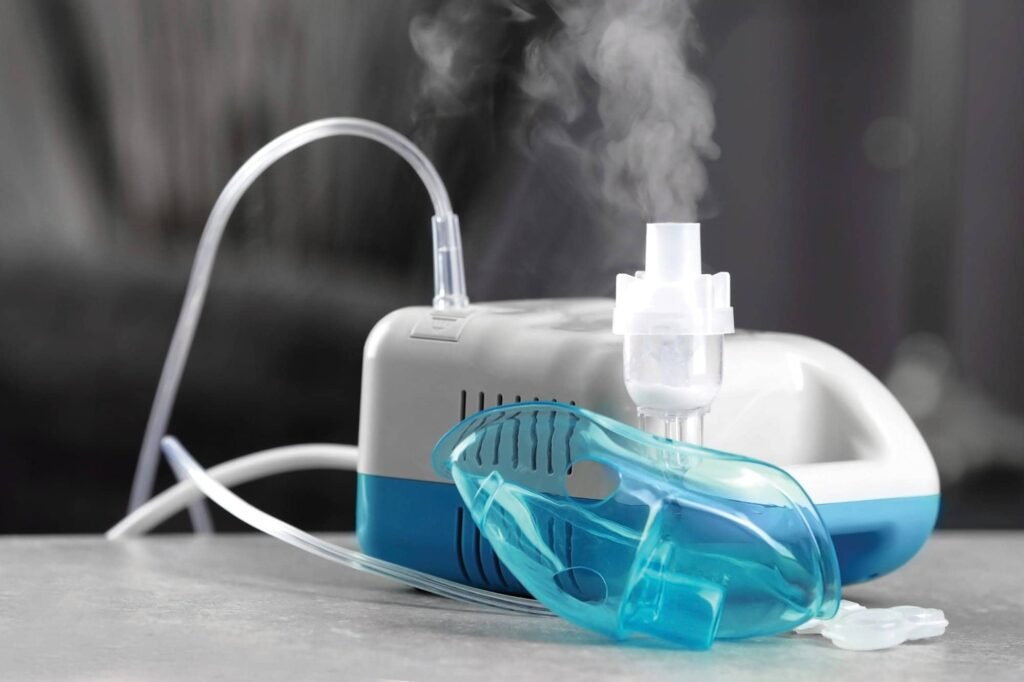Pneumatic nebulizers, also known as jet nebulizers, are a widely used and essential tool in respiratory therapy. These devices transform liquid medication into a fine mist, allowing it to be inhaled directly into the lungs. With over a decade of experience in this field, I will delve into the working mechanism, benefits, advancements, and future directions of pneumatic nebulizers.
How Pneumatic Nebulizers Work
Pneumatic nebulizers use compressed air or oxygen to convert liquid medication into an aerosol mist. The main components of a pneumatic nebulizer include:
- Compressor: This generates the high-velocity airstream necessary to turn the liquid medication into a mist.
- Nebulizer Cup: The liquid medication is placed in this cup, where it is atomized into tiny droplets by the airstream.
- Mouthpiece or Mask: The patient inhales the mist through a mouthpiece or mask, allowing the medication to reach deep into the lungs.
Benefits of Pneumatic Nebulizers
Pneumatic nebulizers offer several significant benefits:
- Effective Drug Delivery: They provide consistent and thorough delivery of medication, ensuring it reaches the lower respiratory tract.
- Ease of Use: Pneumatic nebulizers are particularly beneficial for patients who have difficulty using inhalers, such as young children, the elderly, or those with severe respiratory conditions.
- Versatility: These nebulizers can deliver a wide range of medications, including bronchodilators, corticosteroids, antibiotics, and saline solutions.
- No Coordination Required: Unlike inhalers, pneumatic nebulizers do not require patients to coordinate their breathing with device activation, making them easier to use.
Advancements in Pneumatic Nebulizer Technology
The field of pneumatic nebulizers has seen significant advancements aimed at improving drug delivery efficiency, patient adherence, and overall treatment outcomes. Key innovations include:
- Improved Compressors: Modern compressors are more efficient, quieter, and smaller, making the devices more portable and user-friendly.
- Enhanced Nebulizer Cups: New designs for nebulizer cups improve the efficiency of medication delivery, reducing the amount of wasted medication and ensuring more of the drug reaches the lungs.
- Integrated Smart Technology: Some pneumatic nebulizers are now equipped with smart technology that monitors usage patterns, tracks adherence, and provides real-time feedback to patients and healthcare providers. These features help ensure correct usage and optimize disease management.
- Disposable Nebulizer Kits: To address concerns about infection and maintenance, disposable nebulizer kits are now available. These kits are convenient and ensure that the device remains hygienic.
Challenges and Future Directions
Despite the advancements, several challenges remain in the field of pneumatic nebulizers:
- Noise: Traditional pneumatic nebulizers can be noisy, which may be a concern for some patients. Ongoing research aims to develop quieter compressors.
- Cleaning and Maintenance: Proper cleaning and maintenance are crucial to prevent infections and ensure effective medication delivery. Education on maintenance practices is essential.
- Portability: Although improvements have been made, pneumatic nebulizers are still bulkier than other inhalation devices. Efforts are being made to develop more compact and portable models pneumatic nebulizer.
- Cost and Accessibility: While advancements have improved nebulizer technology, the cost and accessibility of these devices can still be a barrier for some patients. Reducing costs and improving distribution channels remain priorities.
Looking ahead, the future of pneumatic nebulizers is promising. Ongoing research and development focus on creating more efficient, user-friendly, and cost-effective devices. The integration of digital health technologies and the development of personalized therapies are expected to play a crucial role in enhancing the management of respiratory diseases.
Conclusion
Pneumatic nebulizers are essential devices in respiratory therapy, offering effective and easy-to-use delivery of medications. With continuous advancements and a focus on patient-centered solutions, the future of pneumatic nebulizers looks bright. For more information on pneumatic nebulizers, visit the provided resource.



